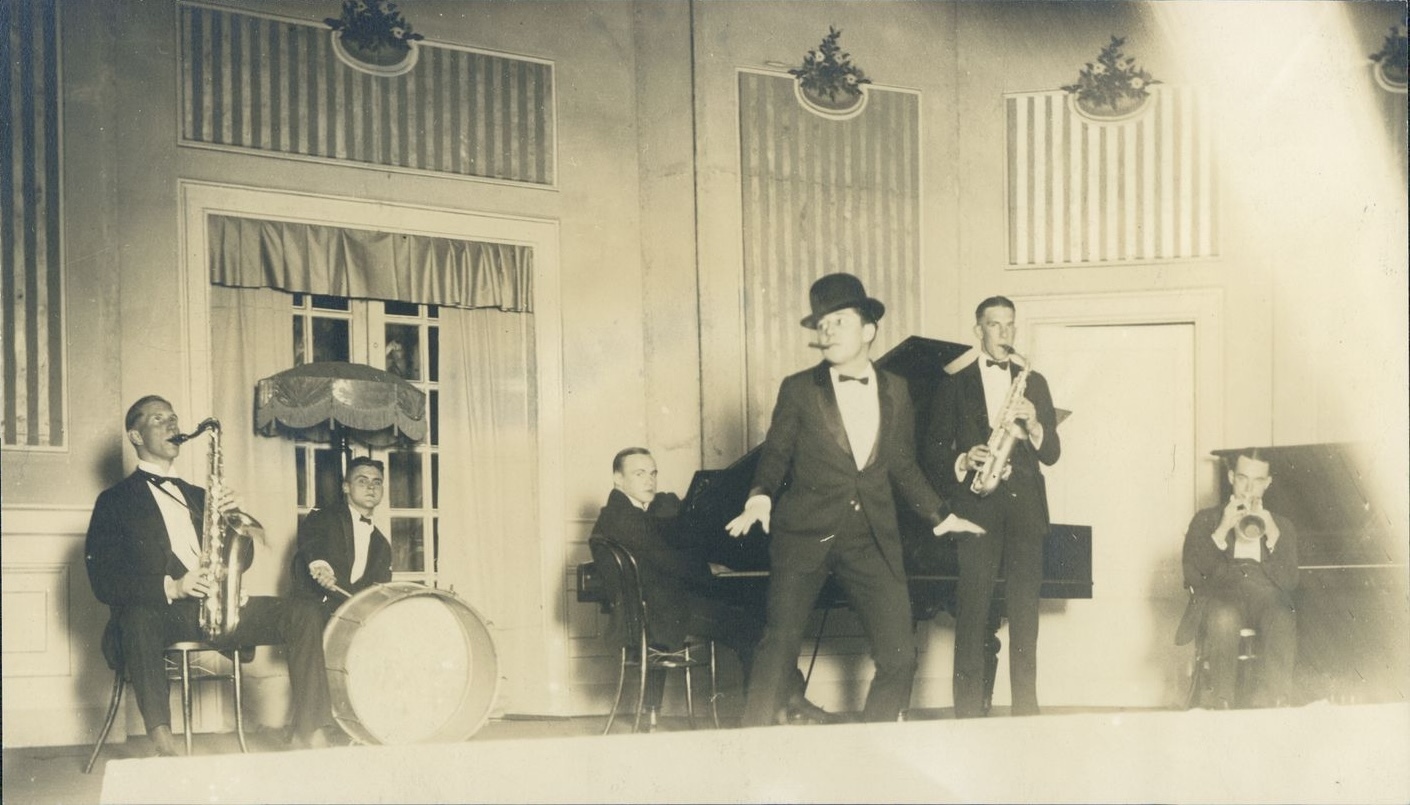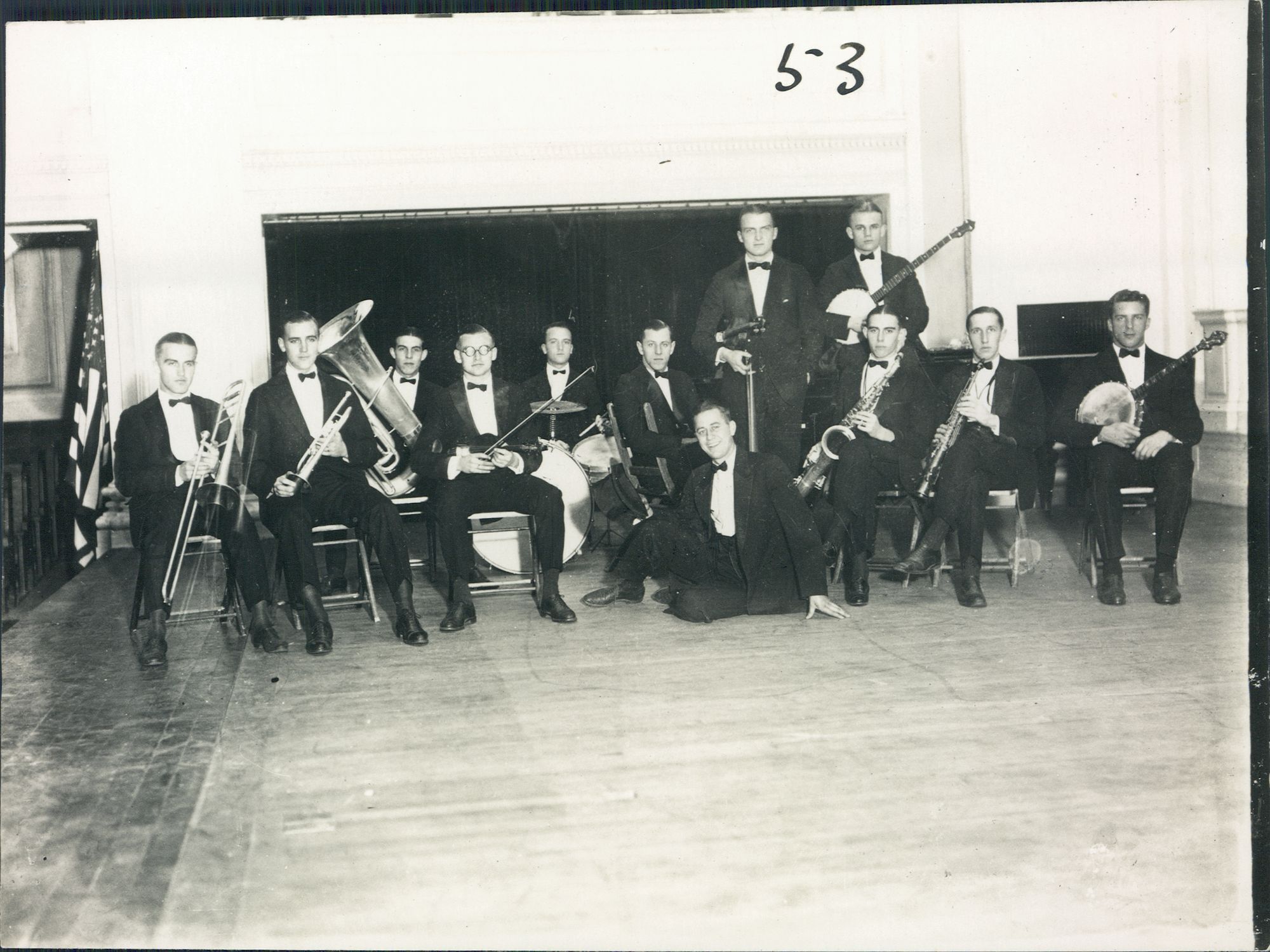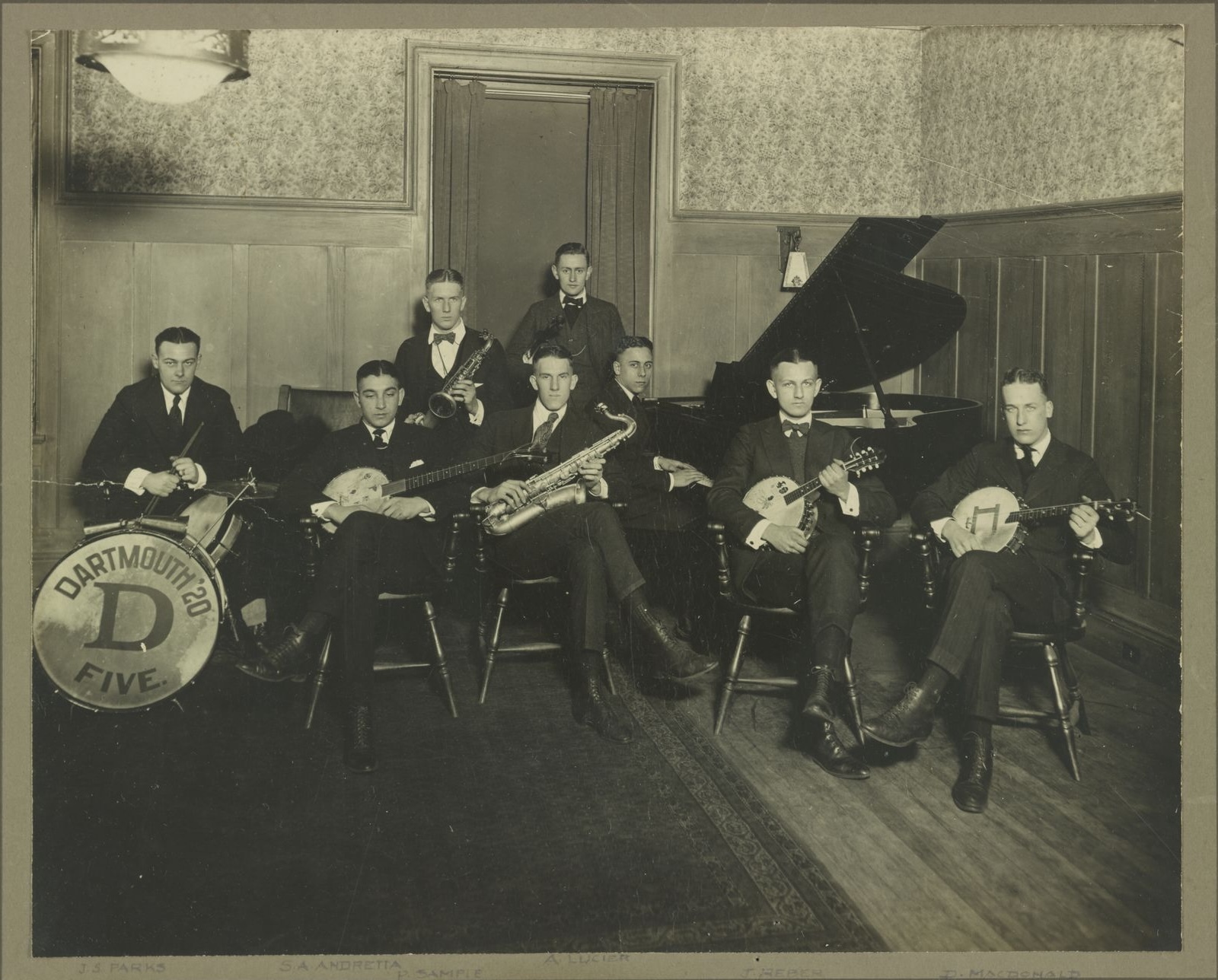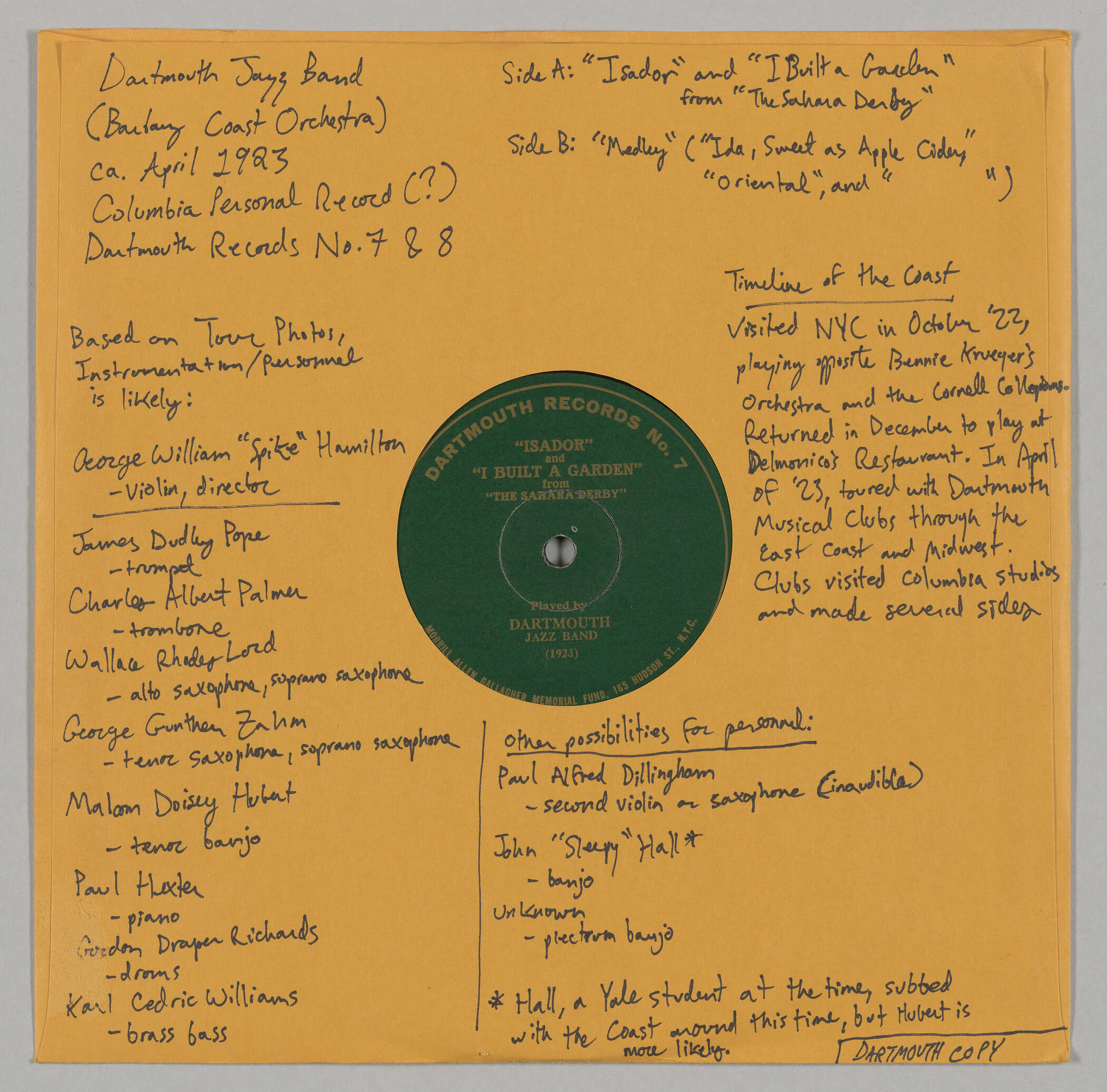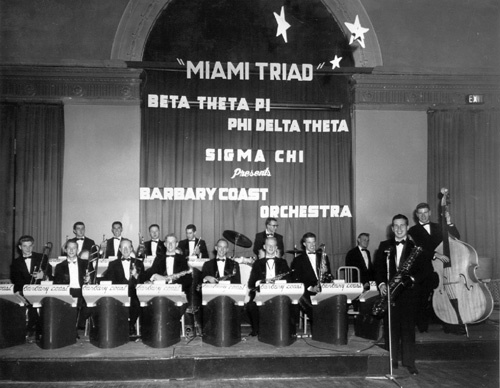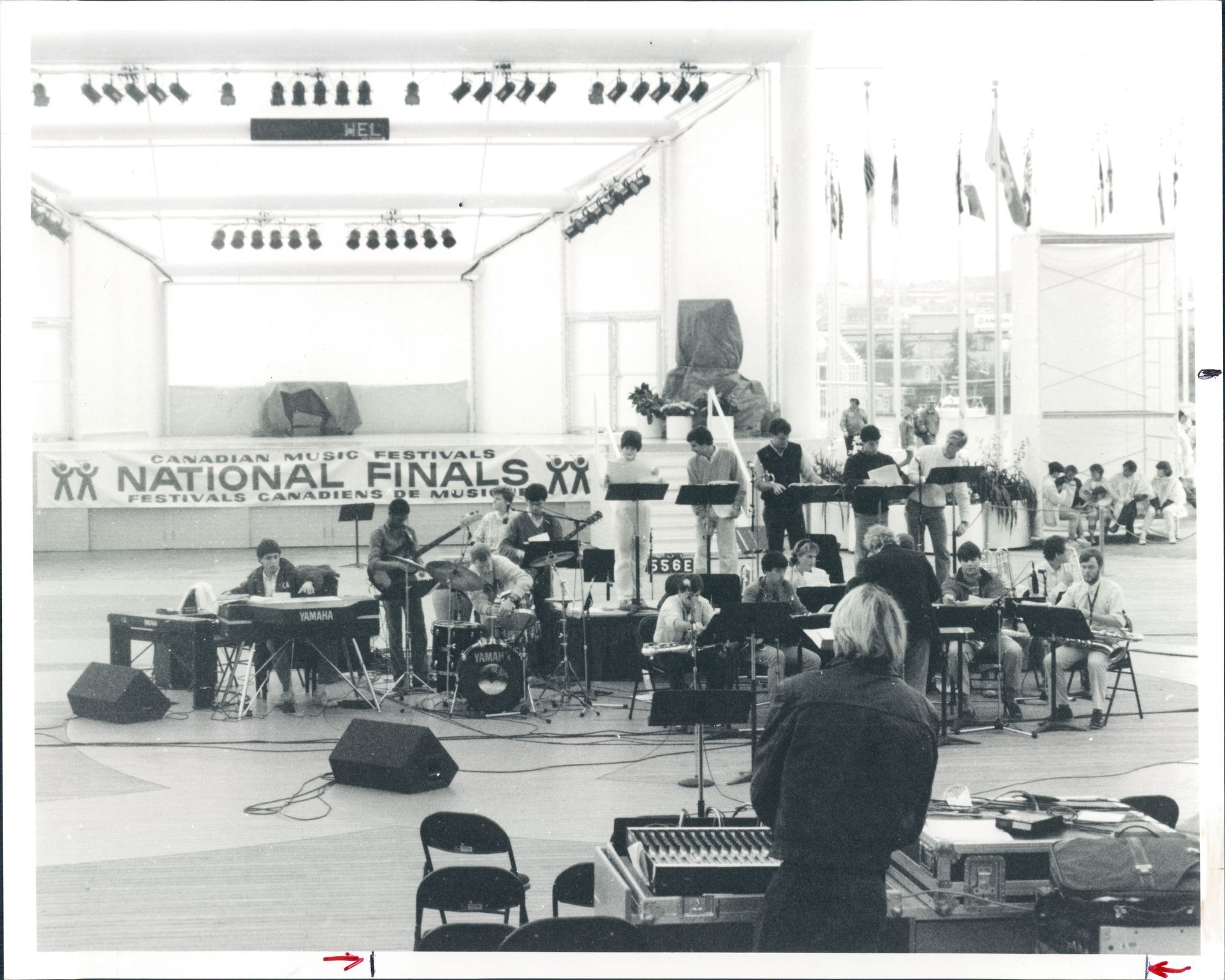Student Ensembles and the Coast Jazz Orchestra
The Coast Jazz Orchestra, having undergone a few name changes since its establishment since 1915, is the earliest jazz band to come out of the Ivy League and one of the longest continuously running jazz bands in the world! Violinist Alvin “Al” Augustia Lucier, Class of 1918, noticed a hunger for hot, danceable music that the society orchestras on the campus could not provide. With some like-minded students, Lucier established the Dartmouth Five, comprised of violin, two saxophones, piano and drums. In the ensuing years, they would use other names too, like the Dartmouth '20 Five or The Dartmouth Jazz Band. The group enjoyed considerable popularity on campus, and when Lucier graduated, he was replaced by J. William “Underworld” Embree Jr., Class of 1920, an eccentric vocalist and vaudevillian influenced by actor-musicians like Ted Lewis and Bert Williams. Other notable early student leaders include Maurice Russel “Russ” Goudy, Class of 1929, and Lowey Haas, Class of 1936.
When the school forced the band to change their name, they fashioned themselves the “Barbary Coast Five,” after the notorious red light district and jazz hotbed in San Francisco. They would later become the “Barbary Coast Orchestra." Other early jazz groups at Dartmouth included the Green Serenaders, the Campus Banjo Orchestra, and the Scrap Iron Four. But the Barbary Coast became a roaring success on campus virtually overnight, as Dick Holbrook, Class of 1931, recounts, the Barbary Coast developed into “a rather profitable year-round business operation.” The band featured at big weekends on campus and toured across the country and even the world, made several recordings in Columbia’s New York studio, and became an official musical club of the College, complete with an academic sponsor.
By the early 1950s, jazz was not only “invited to the party” but perhaps at the center of the Dartmouth music scene. There were quite a few jazz groups (all sharing some personnel) in addition to the Coast, like The Green Collegians, which had two sub-groups called The Sultans and The Ambassadors, The Hurricane Jazz Group, The Four Feathers, and the Dixieland Jazz Band. Each performed in their own sets of tours, competitions, and fraternity parties, with the occasional collaborative “jamboree” in which groups performed in the same concert.
The Coast went on tours of the northeastern colleges, playing dances, parties, concerts, and other festivities. During college breaks, the band went on bigger trips. On several occasions the band traveled to the Elbow Beach Surf Club in Bermuda during spring break and performed there nightly during College Week, an event drawing over 2,500 college students to the island. At this point in time, the general public’s appetite for jazz allowed the band to make money on their tours, and some of the students were even able to pay for tuition this way.
By the mid 1960s, however, fraternity parties had drifted away from jazz music and instead plated R&B, Motown, and rock ‘n roll. The Coast’s repertoire of Ellington, Kenton and Basie, was not the type of thing that students and their dates at that time wanted to dance to. Noel Fidel ‘66 recalled occasionally playing in a pickup trad-jazz group that would meet and play for hockey games, playing almost entirely improvised tunes. During this time, the Coast did not play many gigs of note, apart from playing in the ballroom of the HOP.
Watch a Max Roach master class with the Barbary Coast Jazz Ensemble. Feburary 9, 1989 in Faulkner Recital Hall. (Dartmouth sign-in required)
As other forms of music surpassed jazz in popular culture, the Coast and other jazz groups struggled to survive. Without demand for the music they were playing, and the fact that the Coast was entirely student led, it became difficult for the student leaders of the Coast to get enough Dartmouth students together to play big band music. According to Fred Haas ‘73, by the time he had joined the Coast in 1969 as a first year, the band had “dissipated” and stopped doing much. Despite this, the Coast stuck around just long enough for the arrival of Don Glasgo in 1970s. Soon after, they became the Barbary Coast Jazz Ensemble and renewed their activity. Under Glasgo’s leadership, the ensemble worked with guest artists, ranging from Max Roach to Maria Schneider to Sun Ra, and many of these recordings can be found in the Black Creative Music at Dartmouth digital collection. In 2017, Glasgo retired, and Taylor Ho Bynum took direction over the group, continuing the tradition of inviting the music’s biggest names to work with the Coast, including Tomeka Reid, Patricia Brennan, Anna Weber and Angela Morris, and more. In 2019, the group adopted a new name which pays homage to its original founding, “The Coast Jazz Orchestra at Dartmouth.”
Listen to the Barbary Coast Jazz Ensemble with Slide Hampton (trombone), Clint Houston (bass), Mickey Tucker (piano), and Alan Dawson (drums). February 13, 1982 in Spaulding Auditorium, Hanover, NH. (Dartmouth sign-in required)

